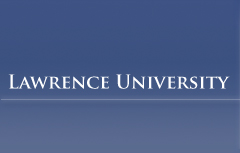Document Type
Honors Project
Publication Date
2014
Abstract
Toxic Cyanobacteria is known to be a bad food source to consumers as well as a main contributor to harmful algal blooms. This study investigates the feeding relationship between an invasive copepod in the Great Lakes system, Eurytemora affinis, and a toxic strain of cyanobacteria, Microcystis aeruginosa. E.affinis has been shown to feed on toxic cyanobacteria. By measuring the filtering rate, ingestion rate, egg production and offspring size between three different food conditions, we hope to gain insight into the effects of toxic cyanobacteria on the feeding and reproduction of this copepod. Food sources include a good green algal food source of Scenedesmus quadricauda, a mixture of the good food source and the toxic M. aeruginosa, and a mixture of the good food source and cyanobacteria filtrate. Results indicated significant differences in the filtering and ingestion rates between the filtrate treatment and the other two food treatments. On the other hand, there were no differences found in egg number or nauplius size.
Level of Honors
magna cum laude
Department
Biology
Advisor
Bart De Stasio
Recommended Citation
Barrett, Nicholas J., "Effects of Toxic Cyanobacteria (Microcystis Aeruginosa) on the Feeding and Reproduction Ecology of the Copepod Eurytemora Affinis from Green Bay, Lake Michigan" (2014). Lawrence University Honors Projects. 60.
https://lux.lawrence.edu/luhp/60
Included in
Biology Commons, Evolution Commons, Terrestrial and Aquatic Ecology Commons, Water Resource Management Commons

Comments
Advisor: Bart De Stasio
Level of Honors: magna cum laude